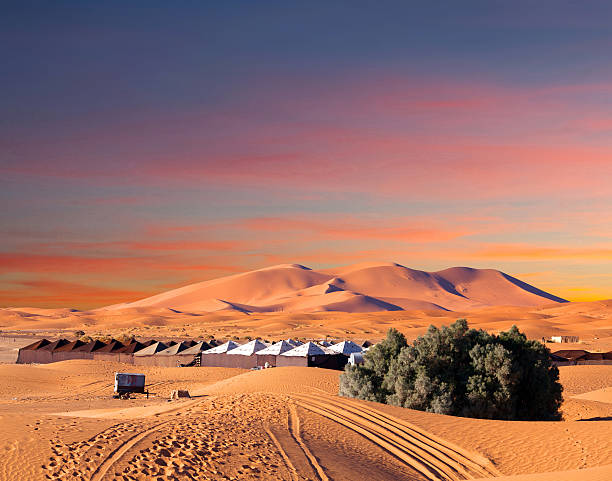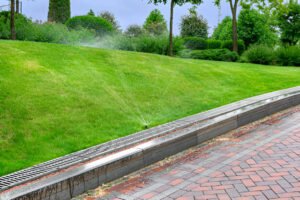Desert camping offers a unique and exhilarating experience, allowing adventurers to immerse themselves in vast, arid landscapes and witness breathtaking sunsets over endless dunes. However, the harsh desert environment presents specific challenges that require careful consideration when choosing the right tent. In this comprehensive guide, we’ll explore the key features to look for in a desert camping tent and review some of the best options available on the market to ensure your desert adventure is comfortable, safe, and memorable.
Desert Camping Challenges
Extreme Temperature Fluctuations
One of the most significant challenges of desert camping is dealing with extreme temperature fluctuations. During the day, temperatures can soar to scorching heights, while nights can be surprisingly cold. A suitable desert camping tent must be able to provide adequate insulation and ventilation to cope with these temperature swings.
Wind and Sand Protection
Desert environments are often characterized by strong winds and blowing sand. A good desert tent should be able to withstand gusty conditions and prevent sand from infiltrating your sleeping area. This requires a sturdy construction and well-designed ventilation systems that can be easily adjusted or sealed as needed.
UV Protection
The intense desert sun can be unforgiving, and prolonged exposure to UV rays can damage both your skin and your camping gear. A high-quality desert tent should offer excellent UV protection to shield you from harmful rays and prevent premature degradation of the tent materials.

Look for in a Desert Camping Tent
Ventilation and Breathability
Proper ventilation is crucial for desert camping tents to maintain a comfortable interior temperature and prevent condensation buildup. Look for tents with multiple mesh windows, adjustable vents, and large doors that allow for excellent airflow. Some advanced tents even feature built-in ground vents or roof vents to enhance air circulation.
Durable and Weather-Resistant Materials
Desert tents should be constructed from durable, weather-resistant materials that can withstand harsh conditions. Look for tents made with high-quality fabrics such as ripstop nylon or polyester with a high denier count. These materials offer excellent tear resistance and durability while remaining lightweight.
UV Protection and Heat-Reflective Coatings
To combat the intense desert sun, opt for tents with UV-resistant coatings or treatments. Some tents feature heat-reflective coatings or light-colored fabrics that help deflect sunlight and keep the interior cooler during hot days.

Sturdy Frame and Guy Line System
A robust frame and guy line system are essential for withstanding strong desert winds. Look for tents with aluminum or carbon fiber poles, which offer excellent strength-to-weight ratios. Multiple guy line attachment points and reinforced stake loops help ensure your tent remains secure in gusty conditions.
Sand and Dust Protection
To minimize sand and dust infiltration, choose a tent with a full-coverage rainfly that extends close to the ground. Sealed seams and zippered doors with storm flaps provide additional protection against blowing sand and dust.
Top Desert Camping Tent Options
1. Big Agnes Copper Spur HV UL2
The Big Agnes Copper Spur HV UL2 is a lightweight and versatile tent that excels in desert environments. Its double-wall design provides excellent ventilation, while the high-volume architecture offers ample headroom and livable space. The tent’s durable ripstop nylon fabric with proprietary patterned weave offers exceptional tear strength and weather resistance.
2. MSR Hubba Hubba NX 2-Person Tent
The MSR Hubba Hubba NX is a popular choice among desert campers due to its excellent balance of weight, durability, and ventilation. Its symmetrical design and freestanding structure make it easy to set up on various desert terrains. The tent’s 20-denier ripstop nylon fabric and DuraShield coating provide robust protection against UV rays and harsh weather conditions.
3. REI Co-op Quarter Dome SL 2 Tent
The REI Co-op Quarter Dome SL 2 Tent is a lightweight and well-ventilated option that performs admirably in desert environments. Its unique pole configuration creates near-vertical walls, maximizing interior space and headroom. The tent’s proprietary ripstop nylon fabric offers excellent durability and weather resistance, while multiple mesh panels provide superior ventilation.
4. Nemo Dagger 2P Backpacking Tent
The Nemo Dagger 2P is a versatile tent that adapts well to desert conditions. Its unique Divvy Sack dual-stage stuff sack allows for easy packing and weight distribution between camping partners. The tent’s light-colored fly helps reflect sunlight, keeping the interior cooler during hot desert days. Multiple mesh panels and adjustable vents provide excellent airflow and temperature regulation.
5. Hilleberg Nallo 2 GT
For those seeking the ultimate in desert camping protection, the Hilleberg Nallo 2 GT offers unparalleled durability and weather resistance. While heavier than some ultralight options, this four-season tent can withstand extreme desert conditions with ease. Its extended vestibule provides ample storage space for gear, while the Kerlon 1200 outer fabric offers exceptional strength and longevity.

Best Tents for Desert Camping
| Tent Model | Weight | Floor Area | Peak Height | Seasons | Key Features |
|---|---|---|---|---|---|
| Big Agnes Copper Spur HV UL2 | 3 lbs 2 oz | 29 sq ft | 40 inches | 3-season | Lightweight, excellent ventilation, high-volume design |
| MSR Hubba Hubba NX 2-Person | 3 lbs 14 oz | 29 sq ft | 39 inches | 3-season | Durable, easy setup, versatile |
| REI Co-op Quarter Dome SL 2 | 2 lbs 14 oz | 28.7 sq ft | 38 inches | 3-season | Lightweight, spacious interior, excellent ventilation |
| Nemo Dagger 2P | 3 lbs 14 oz | 31.3 sq ft | 42 inches | 3-season | Versatile, light-colored fly, dual-stage stuff sack |
| Hilleberg Nallo 2 GT | 6 lbs 7 oz | 30.1 sq ft | 39 inches | 4-season | Extremely durable, extended vestibule, all-weather protection |
Tips for Desert Tent Setup and Maintenance
Proper Site Selection
When setting up your tent in a desert environment, choose a site that offers natural protection from wind and sun. Look for areas near rock formations or vegetation that can provide shade and wind barriers. Avoid low-lying areas that may be prone to flash flooding during rare desert rainstorms.
Secure Anchoring
Given the often sandy or rocky terrain of desert environments, proper anchoring is crucial. Use sturdy tent stakes designed for sandy soil, and consider bringing sand anchors or deadman anchors for additional stability in loose sand. Always use all available guy lines to ensure maximum stability in windy conditions.
Regular Cleaning and Maintenance
Desert environments can be harsh on camping gear. Regularly clean your tent to remove sand and dust, paying special attention to zippers and other moving parts. After your trip, thoroughly clean and dry your tent before storage to prevent mold and mildew growth.
UV Protection for Long-Term Use
If you plan on extended desert camping trips or frequent use in sunny conditions, consider applying additional UV protection to your tent. UV-resistant sprays or treatments can help prolong the life of your tent’s fabric and maintain its weather-resistant properties.
FAQs (Frequently Asked Questions)
Q: Can I use a regular 3-season tent for desert camping?
A: While many 3-season tents can be used for desert camping, it’s important to choose one with excellent ventilation, UV protection, and durability. Look for tents specifically designed or recommended for desert conditions to ensure optimal performance and comfort.
Q: How do I keep my tent cool during hot desert days?
A: To keep your tent cool, set it up in a shaded area if possible, use light-colored or reflective rainflies, maximize ventilation by opening all vents and windows, and consider using a reflective sunshade or tarp above the tent for additional protection.
Q: Are single-wall or double-wall tents better for desert camping?
A: Double-wall tents are generally preferred for desert camping as they offer better ventilation and temperature regulation. The inner mesh layer helps keep out insects and sand, while the outer rainfly provides protection from UV rays and wind.
Q: How do I prevent sand from getting inside my tent?
A: To minimize sand infiltration, choose a tent with a full-coverage rainfly, use a ground cloth or footprint, keep the tent zipped up when not in use, and consider placing a small rug or mat at the entrance to wipe off sand before entering.
Q: What’s the best way to anchor a tent in sandy desert soil?
A: Use specialized sand stakes or anchors designed for loose soil. Alternatively, you can create deadman anchors by burying bags filled with sand or rocks and attaching your guy lines to them. Always use all available guy lines for maximum stability.
Q: How often should I replace my desert camping tent?
A: The lifespan of a desert camping tent depends on factors such as frequency of use, care, and maintenance. With proper care, a high-quality tent can last for many years. However, if you notice significant wear, damage to the fabric, or reduced weather resistance, it may be time to consider a replacement.
Q: Can I use a dark-colored tent for desert camping?
A: While dark-colored tents can be used for desert camping, they tend to absorb more heat and can become uncomfortably warm during hot days. Light-colored or reflective tents are generally preferred for desert environments as they help reflect sunlight and keep the interior cooler.
Q: Are there any specific safety considerations for desert tent camping?
A: When desert camping, be aware of potential hazards such as flash floods, extreme heat, and wildlife. Always check weather forecasts, bring plenty of water, and inform someone of your camping plans. Additionally, be prepared for rapid temperature changes between day and night.
Final Words
Choosing the best tent for desert camping is crucial for ensuring a safe, comfortable, and enjoyable experience in these unique and challenging environments. By prioritizing features such as excellent ventilation, durable materials, UV protection, and wind resistance, you can find a tent that will serve you well in the harsh desert conditions. Whether you opt for a lightweight backpacking tent like the Big Agnes Copper Spur HV UL2 or a more robust option like the Hilleberg Nallo 2 GT, the key is to select a tent that balances your specific needs with the demands of desert camping.











